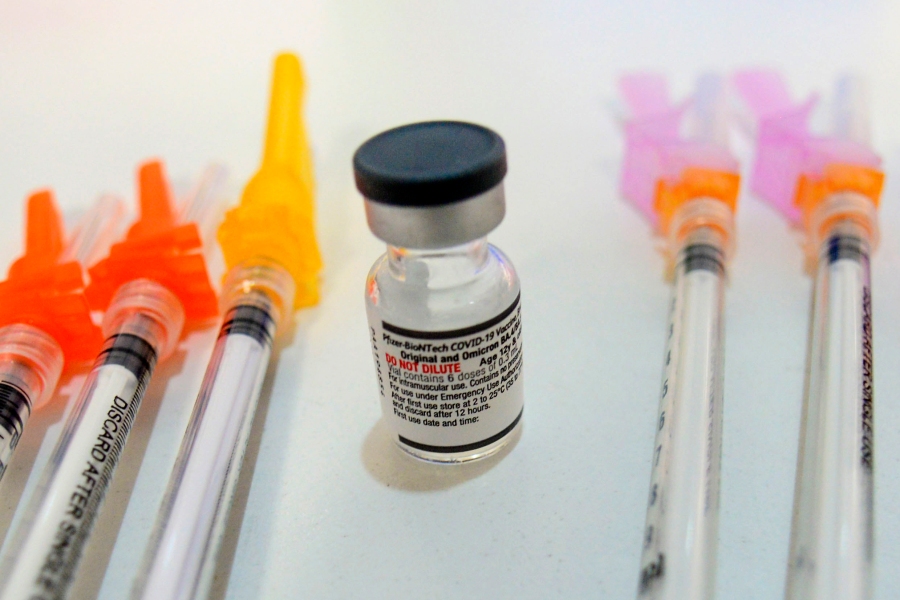Pfizer-BioNTech’s updated COVID-19 vaccine generated a stronger immune response against the majority of the currently circulating omicron variants compared to the original vaccine for people older than 55, according to new data released by the companies Friday.
The companies said the data showed clinical trial participants over age 55 who received the bivalent booster targeting omicron BA.4/BA.5 had antibody levels nearly 4 times as high as those who received the original booster.
The results are based on blood samples taken from adults one month after they received single doses of either the updated booster shot or the first version of the vaccine.
The number of participants in the study was small. Only 36 people received the new booster and 40 received the old one.
The companies said the study found that people both with and without prior COVID infections had a significant increase in their antibody levels after the bivalent shots. But the biggest increase came in people who had no prior infection, according to the companies.
Federal health officials are banking on the updated vaccine as a crucial part of the administration’s COVID-19 response. As the weather turns colder, officials are trying to convince people to get the updated vaccine to stave off a new wave of serious infections and death.
“Virtually every COVID death in America is preventable,” President Biden said last month when he got the updated shot. “Almost everyone who will die from COVID this year will not be up to date on their shots or they will not have taken Paxlovid when they got sick.”
But two months after the administration first authorized the shots, uptake has been poor. According to federal data, fewer than 9 percent of Americans have received one. Officials blame pandemic fatigue and a lack of resources to fully promote the shots.
The White House and health agencies have repeatedly said the updated shots should provide better protection because they target the predominant virus strain. However, new subvariants of omicron are spreading quickly.
According to the Centers for Disease Control and Prevention, BA.5 represents just 40 percent of all new infections. The BQ.1 and BQ.1.1 strains together are responsible for more than 35 percent of new cases, and they are the majority in the CDC’s region comprising New York, New Jersey, Puerto Rico and the Virgin Islands.
Officials and scientists said they believe the bivalent shots are similarly effective against emerging variants, but studies are ongoing.
